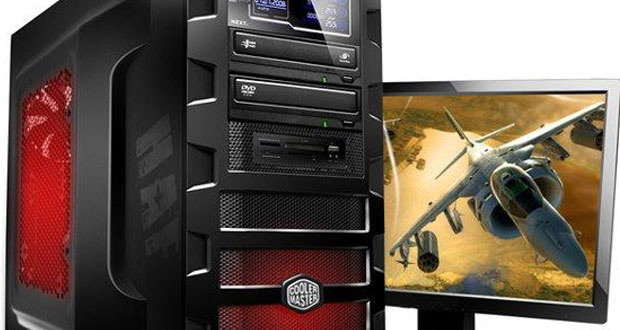4.) The hardware components have the characteristic of heat during operation, so you have to find a way to eliminate the heat produced, which can also be a cause of malfunction. Here comes the heat sink (air or liquid) that will allow us to control the temperature rises. Given that we are building a high-performance machine should mount a liquid heat sink, which has the characteristic of being able to dispose of much heat of the counterparty to air and ensuring a longer life to the whole system. You also need to keep in mind that if the climate in your area is particularly hot or humid, the need for good water cooling becomes a priority, not to mention that you have a PC extremely quiet and relaxing to use.
5.) Now we can devote ourselves to the choice of the video card, true pillar of your gaming experience: Rack up as much money as you can, as a high-end video card will allow you to support the games the next twothree years, if not more. The motherboard has an integrated video card, but these models are not suitable for 3D applications: we will need to buy it separately.
Currently, the market is divided between Nvidia and AMD/ATI. It should not make a difference which brand you choose, but usually, the AMD have lower prices for the same performance. The various models have a particular nomenclature that describes its market range and the ability to offer calculation.
To untangle the maze of the nomenclatures follow this simple rule: The figure that shows the performance class is the second from the left (that is for both of the brand). Obviously try to buy the newer models, then the 7xxx series as regards the ATI and the series 6xx for Nvidia. Prices vary greatly depending on the retailer and the product: from $100 to $1,000. If you want to have very high-power reserves recommend you buy 2 or more cards (up to 4), all of the same make and model and put them in parallel resulting in a doubling of power (and heat generated). Here, you can use a water cooling, highly recommended if you have components in parallel.
6.) A few more steps and you will have completed the hardware configuration. We need the system memory or RAM; its function is to take the data from Hard drive and direct them to the CPU for processing. As a result, a fast RAM and capacious brings benefits in general, both in gaming that use daily. For optimum performance, we recommend at least 8 GB of RAM, but you can always increase this value.
The type of RAM that interests us must have the following characteristics: DDR3 with a frequency of 1,600 Mhz. Prices range from $60 to $300. Let’s take care of Hard disk: the most practical solution is one that provides two distinct HD of two different types, Solid-State Disk (SSD) and conventional HD. The traditional HD is the least expensive, a 1 TB model has a price of $100.
We will use it as a ” warehouse ” where to save photos, music, movies and more. The SSD instead is much more expensive, but has an operating speed ten times superior to the traditional models. We buy a 256 GB model’s use and only to fit the operating system and various software and games (allowing you greater operating speed unmatched).
7.) We are in the pipeline to begin to exploit the new PC. There are only accessory components such as keyboard, mouse, speakers and screen. To screen the indication is not to go beyond 25 inches. In order to fully enjoy the experience of the advice it is to buy FullHD, to take full advantage of modern hardware. As for the rest, they come into play personal tastes and preferences. It’s up to you to decide which components are best suited to your habits and preferences. Happy gaming!

